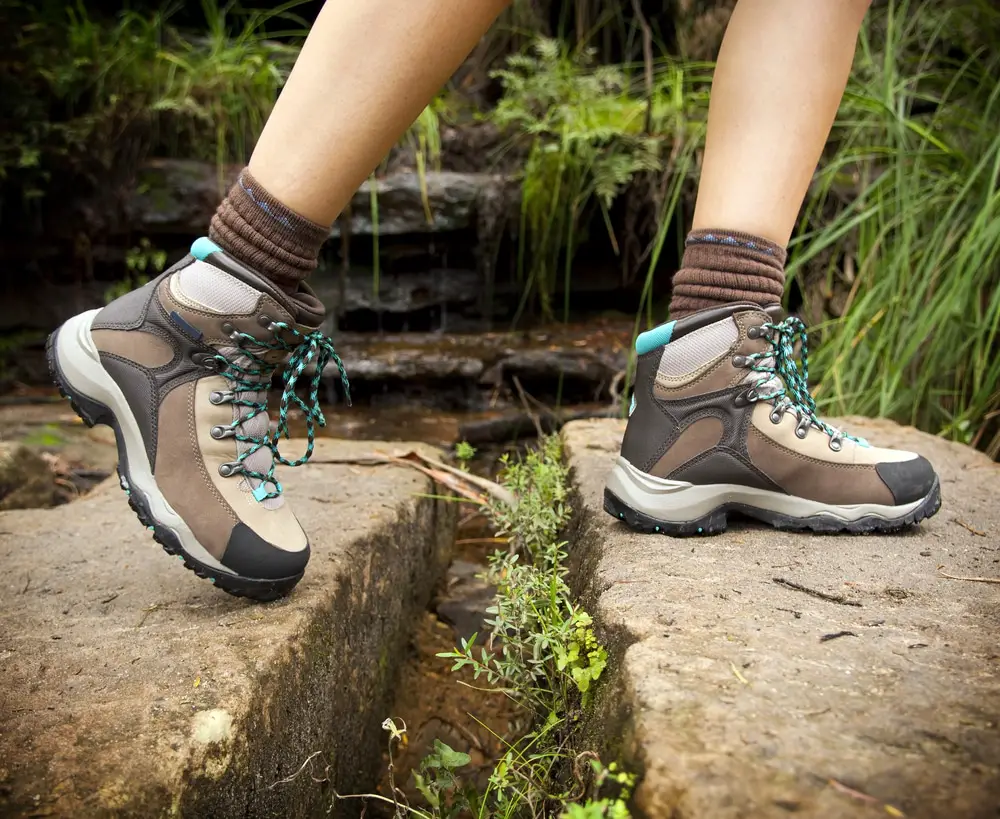I’ll start this article by answering the question in the title: Yes, hiking socks are necessary.
Some people don’t bother with socks too much and consider them the fabric that goes on their feet. They can’t be more wrong, as the socks play a huge role, especially when hiking.
As a strenuous activity, hiking can have a massive impact on the skin of our feet, so the right pair of socks can be crucial. Now you might be wondering – what can hiking socks do that regular ones won’t? You may be surprised to find that hiking socks have plenty of benefits, and I’ll cover them in the following section.
Table of Contents
Benefits of Hiking Socks
I could probably talk for hours about the benefits of hiking socks, but to save you some time, I’ll cover the most important ones.
Blister prevention
There isn’t a person in the world that didn’t have blisters in their life. In most cases, we get them from socks that aren’t a tight fit, and our skin is rubbing against the material.
Hiking socks are made to prevent blisters, as long as you follow a few rules. The first one is to get quality hiking socks, and the second one is for them to be a tight fit. You can get blisters from hiking socks if they are larger. While it may not be as bad as regular socks, getting the right fitment is crucial to avoid blistering completely.
Comfort
Even though I am on the topic of hiking socks, but when it comes to comfort, it can be applied to any activity. Regardless if you’re hiking or going to the store, comfortable socks are crucial and shouldn’t be neglected.
In the comfort department, the material and thickness of the socks are what makes them comfortable or not. Some materials may be softer on the skin than others, and some socks have thicker padding.
At the end of the day, regardless of how thin hiking socks may be, they will be much more comfortable than your standard socks.
Temperature regulation
This is another aspect that can be applied to other activities and depends on the ambient temperature. Hiking can take place in various temperatures ranging from freezing cold to boiling hot. In those situations, proper temperature regulation is critical to keep your feet as happy as they can be.
Hiking socks are designed to keep the temperature of your feet optimal despite the outside one. Technically the socks work together with the footwear on this, but let’s stick to socks.
For summer hiking, thinner socks with better breathability will help keep your feet well circulated. As a result, your feet won’t be hotter than usual.
Winter hikes require ticker socks made from materials that can regulate the temperature better. In most cases, you are looking at wool-based socks. While they will breathe to evacuate moisture from your feet, they will also keep the temperature warm.
Will you be hiking through shallow cold water? Check out our recommendations for Neoprene Socks to keep your feet warm.
Drying
If you’ve ever been hiking, you’ll know that soaked socks are a hiker’s worst enemy. During these kinds of activities, regardless of how good the wicking capabilities of the socks are, they may soak up a bit of sweat. This also comes down to how sweaty your feet are.
Another aspect of hiking socks is washing. You shouldn’t wear the same socks for days when you’re hiking, so you’ll need to wash them. This is the reason why multiple pairs of socks are recommended.
In both scenarios, socks that can dry quickly are ideal to avoid waiting for days for them to be dry, especially when it’s cold. This is one of the reasons why I never recommend cotton socks for hiking.
What to Look for When Buying Hiking Socks
The process of buying hiking socks isn’t as straightforward as getting ones that you’d be wearing around your house. Even though you never should get any pair of socks off the shelves, carefully choosing hiking socks is very important.
Height
In terms of hiking, the height of the socks is very crucial if you want to avoid blisters or minor wounds. They happen if the socks are lower than your footwear, and as you walk, the inside of the shoe rubs the skin.
The height of the socks will depend on the height of the hiking shoes you have. There isn’t an upper limit to this, and my only recommendation is to keep the socks higher than the shoes.
Weight
Hiking is the kind of activity where the weight can make a difference. Sitting at your desk, you may think that it’s pointless, but actually, it’s not. Saving a few grams on the socks and footwear means that you’ll need to use less energy to keep your feet moving.
Going for the lighter socks is always preferable, but it will go against what I’m about to explain in the next section.
Cushioning
You can have hiking shoes with a hundred cushioning layers, but at the end of the day, the socks are the ones that matter.
Going for the thicker socks means that you will be getting thicker padding, and the experience will be more comfortable.
The downside to thicker padding is that you will be adding some weight to this. I would recommend trying and find a balance between the weight and how thick the cushioning is.
Material
The material of the socks can make or break your hiking experience. Different manufacturers go for a different blend of materials, and sometimes it can confuse novice hikers.
When it comes to hiking, there are certain materials that you should avoid, like cotton. On the other hand, wool-based socks have proven to be an excellent option. Over half of the lend is wool which is mixed with various synthetic fibers. The result is socks that are great at regulating temperature but also help your feet breathe.
Size
I cannot stress this enough – never wear bigger or smaller-sized socks when hiking. Socks are designed to perform optimally when they provide a snug fit to your feet.
Larger socks mean that the padding will be off the critical points on your feet. Worst of all, it won’t stay in place and will constantly rub your skin, leading to blisters.
Smaller-sized socks will be shorter than intended and will also suffer from the same problem as larger ones – padding in the wrong places. In this case, things can worsen because the padding on your heel will be moved forward, leaving your heel a bit more exposed.
Does Wearing 2 Pairs of Socks Help Blisters?
Before I explain, I need to be honest about one thing – there’s hardly anything you can do to avoid blisters altogether. You can minimize it and nothing more.
The idea behind the two-socks technique is to have one pair of thin socks as the inner ones and a thicker one as the outer. You will still have some rubbing, but not between the socks and your skin. Instead, with this scenario, the inner and outer socks will rub, leaving your skin in a better shape.
Recommended Brands for Hiking Socks
There are plenty of socks manufacturers that make excellent hiking socks. Unfortunately, there are way too many for me to cover in a single article. Instead, I’ll mention a few that I’ve had a very positive experience with.
Darn Tough

A name that will always be on top of most socks lists is Darn Tough. The company has been in the business for over 40 years, and its forte is wool and synthetic blends. Even though the price tag is slightly on the hefty side, you will get durable and comfortable socks. In terms of design, don’t expect anything fancy. Most are classic, but there are plenty of models to choose from.
Farm to Feet

Farm to Feet is a relatively new player in the socks industry but with a lot to offer. It is a socks company that has similar wool and synthetic blend as Darn Tough. While it doesn’t have as many models to choose from, the color options are better. For a slightly lower price tag, you get very comfortable socks that will last quite a long time.
Bombas

This is a startup company where you get to give back something to the community. For every purchased pair, the company donates one pair of socks to homeless shelters. Even though Bombas sells these as hiking socks, some of the models are cotton-based. They are not terrible, but when you consider the price and the fact that you donate, things are not too bad.
Smartwool

Last but not least is Smartwool. Looking at the name, you may have guessed that this company specializes in wool-based socks. There is a clever knitting technology involved that makes them durable. The price tag is similar to Darn Tough, and I was expecting a bit more durability. Still, Smartwool socks are not bad, and with a plethora of options available, you can go wrong with this manufacturer.

